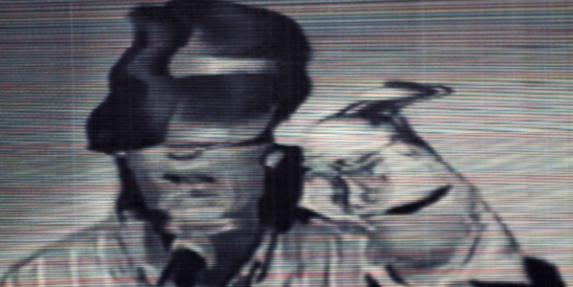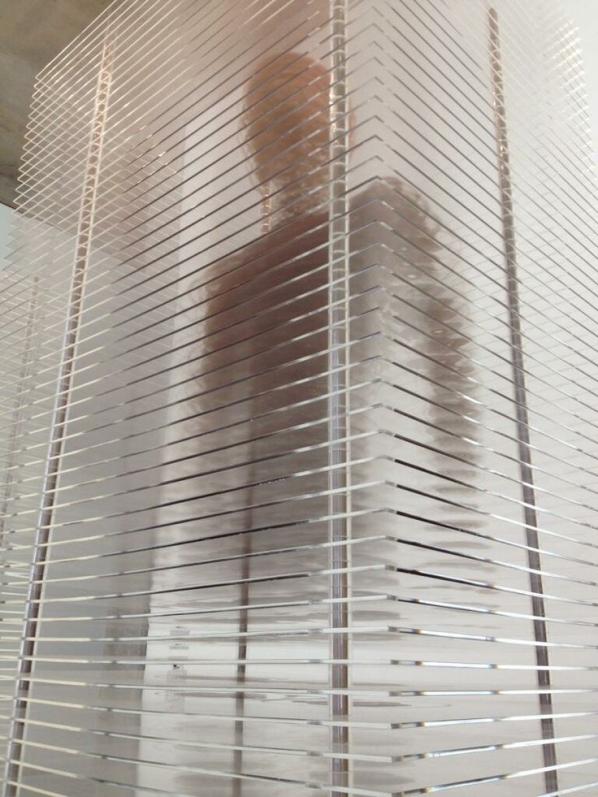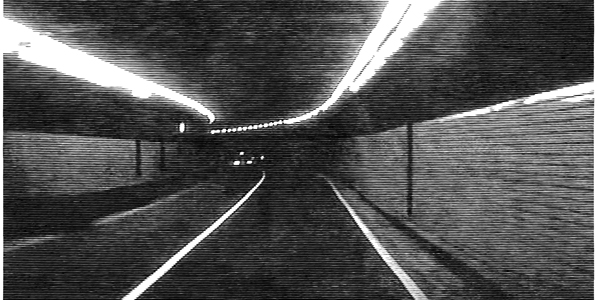



Featured image: Jane and Louise Wilson – ‘False Positive, False Negative’ (2012 Screen print on mirrored acrylic)
The Negligent Eye the Bluecoat Liverpool Sat, 08 Mar 2014 – Sun, 15 Jun 2014 http://www.thebluecoat.org.uk/events/view/exhibitions/1971
Featuring artists: Cory Arcangel, Christiane Baumgartner, Thomas Bewick, Jyll Bradley, Maurice Carlin, Helen Chadwick, Susan Collins, Conroy/Sanderson, Nicky Coutts, Elizabeth Gossling, Beatrice Haines, Juneau Projects, Laura Maloney, Bob Matthews, London Fieldworks (with the participation of Gustav Metzger), Marilène Oliver, Flora Parrott, South Atlantic Souvenirs, Imogen Stidworthy, Jo Stockham, Wolfgang Tillmans, Alessa Tinne, Michael Wegerer, Rachel Whiteread, Jane and Louise Wilson.
The Negligent Eye revolves around the way a digitally-native generation of artists – particularly printmakers – are questioning their relation to the digital, using the notion of ‘scanning’ as a kind of mid-state of the creative process of the human-digital hybrid. The show is co-curated curated by the Bluecoat’s Sara-Jayne Parsons and head of printmaking at the RCA, Jo Stockham, and features several works by her graduates, and other artists from around the RCA, such as Bob Matthews and Christiane Baumgartner. “The relationship between the material and virtual worlds is a question, a set of contradictions we are all inside and how technical images exert their influence on our everyday experience is of ever increasing importance.” Jo Stockham.


In her article Too Much World: Is the Internet Dead? Hito Steyerl asks what happened to the internet, after it died – that is, in an era of the “post-internet” after it stopped becoming a possibility, even in the midst, because of, and symptomized by, its permeation of everything. Steyerl is a major force in understanding our relationship to digital images, and her use of ‘death’ occurred to me often during viewings of this show and surrounding events, particularly as it could be applied to the post-digital.
So in a sense, I experienced the show as an autopsy of the digital image. From the tragic, simian face looking out from the first ever digital image, taken by Russell Kirsch of his son in 1950, exhibited at two points in the exhibition like an insistent memory. To Marilène Oliver’s figures from her 2003 Family Portrait series where bodies have been evoked as series of horizontal cross-section prints layered on acetate, so that they appear as though stored, but only partially in this world; the exhibition continually references, exemplifies and unpacks the death of its medium.
The post-digital is a paradoxical term – at once assuming the reliance of all contemporary culture in digitality, but also looking past it; affirming the death of a form, while embodying its afterlife. This is what Elizabeth Gossling’s images of a dead comedian says to me, when it is scanned from a computer screen and printed back on to archival paper, with his image waving from behind an ether of static, living in the solid pulp. The best works in this show, Gossling’s included, speak very eloquently about the post-digital, and how artists are motivated into hybrid forms of production, always acknowledging and working in a context of the saturation of the digital.

The notion of saturation, and its implications of the dissolution and liquidity, itself saturates the show: the first work, Maurice Carlin’s monumental print, scrolling down from the ceiling of the vide space is in one sense a spectral ancestor of Monet’s waterlilies, but with gashes and pustules of CMYK colour oozing up from behind the serine blue and greens of the pond, and white pixel-like rectangles plugging up the gaps; London Fieldworks’ 3D image of data collected from Gustav Metzger’s brain while he thought of nothing, is presented on a screen with a trickling sound – perhaps of information leaking inexorably back in?

Marilène Oliver’s glitch-sculpture of body parts fused in the heart of the 3D scan/print machine hang in the chute of the gallery corridor, their surfaces mid-ripple as though submerged; Jo Stockham’s etherized black and white shot of an element of the London skyline, seen perhaps through a teary bus window, but now writhing with red in its afterlife as a veined and depthless skin.


Using damage and error to expose the affectivity of a medium, particularly in the context of the digital is the central mode of Glitch Art. I have already used the term glitch to describe the aesthetic of Marilène Oliver’s sculptures, and the traces of digital-to-digital scan in Gosling’s work and the rich material pixilation of Christine Baumgarner’s inscription of CCTV camera stills into largescale wood prints, also contain these signatures.

If there is a criticism to be leveled at these admirable and, frankly gorgeous, works. It is in their distance from what Rosa Menkman refers to as the moment(um) of the glitch. In the medium of print-making, the material fact of the object dominates, and with this show, no-matter the stated and playful interest in the ‘between-state’ of scanning, there remains the focus on material production – and therefore an irrefutable commodification.
Prints on archival paper and tempered steel, casts in plaster and large-scale hardwearing plastics, each speak of an appropriation of the tactical and fluid glitch, and its migration into commodifiable form. Maurice Carlin’s large-scale printwork could adorn a restaurant wall, just as Monet’s waterlilies functioned during his era, and Oliver’s sculptures also speak and modernise the language of sculpture as produced for private collections through the ages.
There are works also which say nothing of the ‘post-digital’, such as Imogen Stidworthy’s Sacha, a deeply thoughtful study of a wire-tap transcription ‘artist’ Sacha van Loo. Stidworthy’s enigmatic works are often hard to pin down thematically, and here it feels like the loft-type space of Gallery 3 has been used as an outer limit to the reach of the show. And then there are other works that say nothing at all and lessen the show’s conceptual rigor. I see Jeaneu Project’s peice, and think ‘smudge lawn’. I see a Cory Archangel print and a Rachel Whitereed miniture and their names flash through my consciousness like a Google Glass press release.
Truly though, this is a really refreshingly vibrant and precient show at the Bluecoat, and a great partner to the Mark Lecky exhibition featured at the venue last year in its pressing contemporaneity. The exhibition has also been a fulcrum for a really interesting series of events which have dealt with image production – including a day of talks and presentations, i-Scan, artist talks from contributing artists such as Imogen Stidworthy, and independently curated events such as the second in Deep Hedonia’s excellent Space/Sound series, where artists such as Madeline Hall, Jon Baraclough, Simon Jones and Andy Hunt explored the multiple angles from which digital scanning can be exploited as a performance and av medium. As with the Mark Lecky show, there is something about the context of the Bluecoat, as Liverpool’s most paradoxical space, which delivers an archival retrospective out of the most up-to-date material, and this tension is what pulls appart the body of works before us.
The Rubik’s Cube is not just a forgotten toy from the 80’s. The fact is that it’s even more popular than ever before. You can play with this great puzzle here.